Which Famous Artist Has Your Myers-Briggs® Personality Type?
Is there any particular artist you feel a special connection to? Do you ever see a painting or drawing and feel irresistibly drawn to it? Artwork can express something deep inside of us that words cannot. A piece of artwork can capture a moment in time in a way that even a photograph can’t. Anyone can be an artist, you don’t have to have a particular personality type, but different types tend to prefer different types of artwork. Intuitives are drawn to symbolic images that are drawn from the imagination. Sensors tend to appreciate realism and historical artwork.
It took quite a while to compile this list of artists, but eventually, I found a creator from each personality type. I hope looking at this list will inspire you to explore your creative side!

Not sure what your personality type is? Take our new personality questionnaire here. Or you can take the official MBTI® here.
If you want to learn more about how you can develop your creative gifts based on your type, check out one of my favorite books, Creative You: Using Your Personality Type to Thrive
ENFP – Salvador Dali
“Surrealism is destructive, but it destroys only what it considers to be shackles limiting our vision.”
– Salvador Dali
Salvador Dali was a Spanish surrealist painter who perfectly captured the imagination and creativity of the ENFP. Dali saw not what things were, but what they could be transformed into. Dali was always curious about the world, about everything happening around him, about exploring potentials and visions. He also used his paintings to express his identity and personality, which is a great example of how ENFPs can express Fi through artistic means.
ENTP – Leonardo da Vinci
“Art is never finished, only abandoned.”
– Leonardo da Vinci
Leonardo da Vinci captures the innovative, theoretical vision of the ENTP. He was constantly experimenting with new themes in invention and art; fluidly blending theories of mathematics with psychological themes and anatomical realism. He was a man of many visions who sought to experiment and understand new possibilities and unforeseen potential in the world.
INFP – Vincent Van Gogh
“I put my heart and soul into my work, and have lost my mind in the process.”
– Vincent Van Gogh
For Van Gogh, painting was an expression of his innermost heart and soul. He was a true idealist, who believed in showing love to the downtrodden, maintaining his authenticity, and living a life that was in accordance with his values. He was known as quiet, thoughtful, and imaginative, and sadly he suffered from much despair and a feeling of being misunderstood in his short lifetime.
In true intuitive form, Van Gogh eschewed traditional painting techniques in favor of creating from his imaginative impressions. His lush, emotion-fueled paintings capture the creativity and depth of the INFP.
INTP – J.M.W Turner
“If I could find anything blacker than black, I’d use it.”
– J.M.W. Turner
J.M.W. Turner was a shy academic who had an unconventional form of artistry. He once hung blank canvases at a prestigious Royal Academy exhibit and when the show began he spontaneously painted his entries. He believed in giving his imagination time to process and create on its own time. While his method may have seemed haphazard and disorganized to others, there was an internal method and expertise that couldn’t be denied. According to a biography of Turner by James Hamilton, he “drove the color about on the paper until an image emerged that expressed the idea in his mind.”
ENFJ – Henri Matisse
“What I dream of is an art of balance, of purity and serenity devoid of troubling or depressing subject matter – a soothing, calming influence of the mind, rather like a good armchair which provides relaxation from physical fatigue.”
– Henri Matisse
Henri Matisse was known for his warmth, enthusiasm, and personal relationship with his subjects. He always taught his models to imagine how their character would feel in a particular scene. The feelings of the model were more important than the actual perfection of the pose. Matisse was a man of vision and rich emotions, and these translate into his bold, vibrant paintings.
ENTJ – Claude Monet
“I wear myself out and struggle with the sun. And what a sun here! It would be necessary to paint here with gold and gemstones. It is wonderful.”
– Claude Monet
Many might be surprised to find that the painter of water lilies and gardens was an ENTJ. Although his paintings are full of sweeping beauty and delicate pastel colors, Monet himself was hardly a delicate flower. He was considered dauntless, commanding, and a perfectionist. In his day, painting nature was unconventional, and painting outdoors was looked down upon. He had no desire to copy the old masters, or follow in traditional footsteps, but instead aimed to paint new pieces that had never before been seen. Monet cast aside convention and fearlessly defied the norm. He was led by his great vision and hard work. He is an excellent example to any ENTJs who feel driven to pursue their creative endeavors.
INFJ – Odilon Redon
“Nothing in art is achieved by will alone. It is achieved by docilely submitting to the subconscious.”
– Odilon Redon
Odilon Redon was an artist who drew almost entirely from his dreams, visions, and imagination. His symbolic imagery is a perfect example of what you would find in an artist driven by Introverted Intuition. He often used “floating” heads in his drawings to symbolize the desire to free oneself from the shackles of the ordinary, mundane world. He believed in exploring a higher state of consciousness and he was able to do this by painting or drawing his dreams, his “monsters”, and his abstract thoughts. He was known as a kind-hearted, melancholy artist who loved to spend his time in solitary reflection and contemplation.
INTJ – Arnold Böcklin
Arnold Bocklin was known as a serious, complex artist who felt compelled to bring his visions to life. He often drew in symbolic, melancholy visions that had an eerie yet beautiful atmosphere to them. He loved the surreal and imaginative more than the traditional and realistic forms of artistry, and his masterpieces have proven timeless. His artistry is a perfect example of the deep symbolism and mythological yearnings of the Ni-dominant mind.
ESFJ – George Hughes
George Hughes was a man who favored community and tradition, perfectly capturing family life and American living in scenes that are both humorous and beautiful. While photography was taking the country by storm, Hughes’s artwork continued to be chosen for magazine covers because of its emotion, beauty, and humor. Hughes knew how to capture a moment in time in an idyllic American landscape. His work is realistic, formed around tradition, community, and perfectly captures a multitude of feelings and emotions from its subjects.
ESTJ – Emanuel Leutze
Emanuel Leutze was a German-born American historical painter whose picture “Washington Crossing the Delaware” is among one of the most popular and widely produced paintings of an American historical event. He was a determined, responsible man who sold his paintings from the age of 14 so he could support himself after his father’s death. He was known for his attention to detail and his outgoing, responsible personality. His life embodied the hard-working nature of the ESTJ and his artwork captured the realistic detail that many sensing artists excel at.
ESFP – Frederic Remington
“Art is a she-devil of a mistress, and if at times in earlier days she would not even stoop to my way of thinking, I have persevered and will so continue.”
– Frederic Remington
Frederic Remington was an American painter, illustrator, and sculptor who was known for his vivid illustrations of life in the “Wild West”. He was known for being active and adventurous; he loved to hunt, swim, ride, and go camping. He cared little for formal education, preferring to explore and be active in the outer world and capture it with his sketches of soldiers and cowboys. He was known as a pleasant, fun-loving man with a good sense of humor and a generous spirit. He enjoyed making caricatures of his classmates to bring them laughs and he always preferred to paint scenes full of action and movement. He was skilled at football and boxing and enjoyed combining his athletic pursuits with his love of art and the Western landscape. Remington is an excellent example of how an ESFP can capture their love of action, adventure, and even humor in timeless artwork.
ESTP – John James Audubon
“Hunting, fishing, drawing, and music occupied my every moment. Cares I knew not, and cared naught about them.”
– John James Audubon
John James Audubon was an American ornithologist, artist, and naturalist who painted hundreds of American birds in their natural habitats. He was known for his gregarious, adventurous nature, and his love of the wild, unexplored lands of North America. He strove for accuracy, and his goal was to accomplish something no other artist had done: to illustrate all the birds of North America. Audubon captures the daring, adventurous nature of the ESTP and his artwork showcases the detailed realism many SP artists employ.
ISFP – Winslow Homer
“The life that I have chosen gives me my full hours of enjoyment for the balance of my life: the sun will not rise, or set, without my notice and thanks.”
– Winslow Homer
Winslow Homer was an American painter whose works are considered among the most powerful and expressive of late 19th-century American art. Homer was known as a thoughtful and reclusive man, who would go to great lengths to capture the struggle between mankind and the forces of nature. He longed to capture humanity in its humble states; he captured the struggle of women taking care of the home while their men were at war, or sailors braving a fierce storm. His art is fueled with emotion and the beauty and tumult of everyday life. He perfectly captures the aesthetic expertise and emotional depth of the ISFP.
ISTP – Georgia O’Keeffe
“I don’t very much enjoy looking at paintings in general. I know too much about them. I take them apart.”
– Georgia O’Keeffe
Georgia O’Keeffe is an American artist best known for her paintings of enlarged flowers and New Mexico landscapes. She was known for being practical, straightforward, and unsentimental in her outlook. She surprised fans of her work when she clearly stated, “I hate flowers – I paint them because they’re cheaper than models and they don’t move.” Her joy was in creating and in the physical process. She enjoyed working alone and playing with her materials, improvising, and working quickly to create new and unusual ideas. O’Keeffe is a wonderful example of how you can remain unsentimental and detached yet still create inspiring artwork for the world.
ISFJ – Norman Rockwell
“I talk as I sketch, too, in order to keep their minds off what I’m doing so I’ll get the most natural expression I can from them. Also, the talking helps to size up the subject’s personality, so I can figure out better how to portray him.”
– Norman Rockwell
Norman Rockwell was an American illustrator and painter who captured everyday life in nostalgic images of small-town America. He told marvelous stories through pictures and had a depth of insight into human emotion. He aimed to draw expressions that were so true to the emotion of the character that you couldn’t help but relate to or laugh at the sincerity. Rockwell was known as a reserved, introspective man who infused his values into his work. He was extremely observant about people and loved to capture their true emotions and personality in each portrait. ISFJ artists notice the details that make each person unique, and they can see the beauty in everyday moments that pass other people by.
ISTJ – Edward Hopper
“My aim in painting has always been the most exact transcription possible of my most intimate impression of nature.”
– Edward Hopper
Edward Hopper was a realist who depicted stark urban landscapes and isolated figures in stunning clarity. He was known for his serious demeanor, and he disliked self-promotion or anything “showy”. He believed in being true to history, which caused him professional discord from time to time. Once, when he was hired to design a movie poster featuring the Napoleonic wars, he illustrated the soldiers in French uniforms of that period only to be instructed later to cater to popular American taste. He disliked this because he felt it was inauthentic, and hated improvising or creating something that didn’t maintain historical accuracy. Hopper was known for being responsible, quiet, and observant. He perfectly captures the accuracy and detail-oriented nature of the ISTJ personality.
What Do You Think?
Do you have a favorite artist on this list? Do you have a favorite artist that you’d like to add? Let me know in the comments?!
Find out more about your personality type in our eBooks, Discovering You: Unlocking the Power of Personality Type or The INFJ – Understanding the Mystic. You can also connect with me via Facebook, Instagram, or Twitter!
Liked this post? Then you’ll love these!
Which Intuitive Author Has Your Myers-Briggs Personality Type?
Which Sensor Author Has Your Myers-Briggs Personality Type?
Which Board Game Will You Dominate Based on Your Personality Type
The Greatest Movie Heroes of Every Myers-Briggs Type
This article contains affiliate links. I only recommend products I truly believe in.
Sources:
Creative You: Using Your Personality Type to Thrive
Lives of the Artists: Masterpieces, Messes (and what the neighbors thought!)


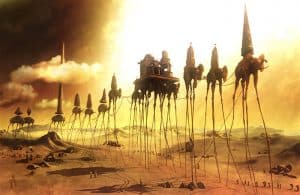




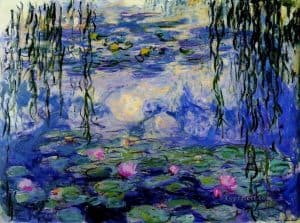





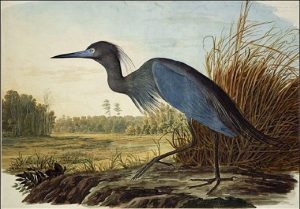
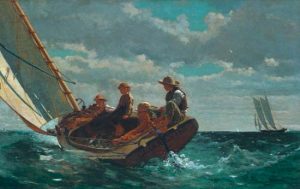


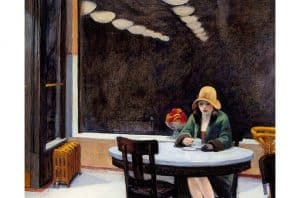










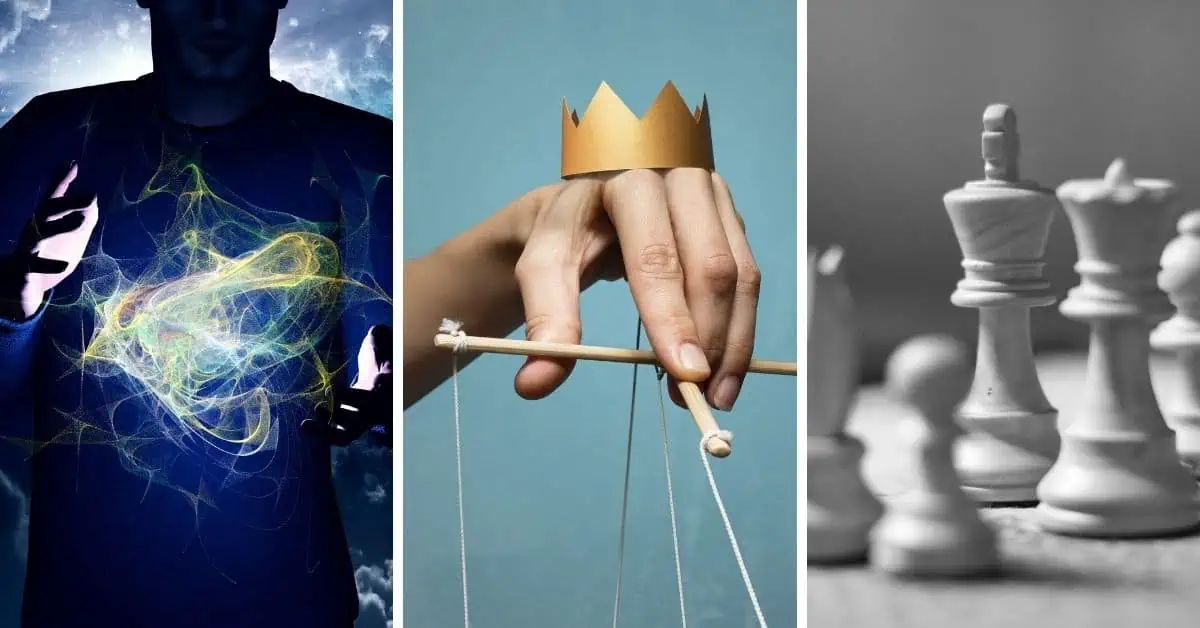
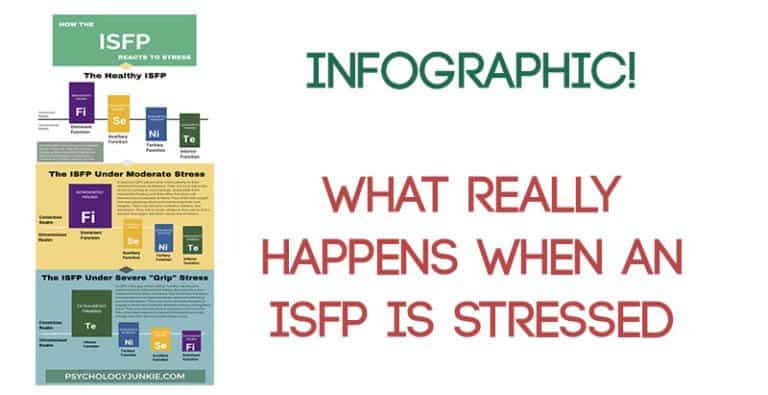

I love this! You can really see how type influences their styles. I’m an INTJ but I think J.M.W Turner’s work is my favorite.
I love this too! Very interesting to see the difference between the S-type and N-type works, and further, the difference between what an F-type and a T-type produces within being S or N. I really had never seen it so clearly before.
I am an INFP, and i’ve been a fan of Van Gogh since a long time!
Ohh, so nice to hear an INFP perspective! I love his work as well (I’m an INFJ)…it is very inspiring and dream-like to me 🙂
I’m really curious about Andrew Wyeth… Great post!
The picture attributed to Salvador Dali is actually by a Russian artist named Vladimir Kuch. I know, because I own it.
Ohhhh, thank you for letting me know! I was sure that was Salvador Dali, guess I blundered that one!
I’m an INTP professional artist, I can tell you more than half of your list is wrong af. The appearance and expectation is far from what they are my child. More study plz.
“I’m a kid! I don’t like being told what to do, and music is the only place I know where I can roam free and do what I want. It is my fortress of solitude and only I have the key.”
“The reason it takes so long to produce an album like this is because out of 10 pieces I write, only one or two will make the cut, and then the process to embellish it with live orchestra, singers and instrumentalists begins, which can last for months. It’s all about finding the right voice for the right music, the right instrument for the right melody, the right length, sound color, orchestration, lyrics etc. It takes a long time, and the process is very different from writing film music where you typically just follow something on-screen, or in a band where you have your guitars, bass, drums, vocals and maybe a synth. The complexity of the soundscape means more things can go wrong, clash, or otherwise make the process difficult. You are sometimes dealing with polar opposites, but just because we’ve been told that certain things don’t go well together I don’t see that as a reason to avoid it, but a challenge rather. The satisfaction for me ultimately lies in untangling the mess and making all the individual chaotic parts come together in harmony somehow. That’s when I feel like I’ve done a good job.”
Thomas Bergersen (ISFP)
Thanks for this information!! I’m going to look up Thomas Bergersen now! IXFPs are some of the most moving artists out there I think.
He is impressive… I only know the MBTI since a few weeks … But for his taste of challenge, the nature of his music (he is the inventor of epic music), and his physical athletic I thought “Adventurer”.
Cassandra, Merchant Prince, Moving Mountain, Invisible, Immortal, Moving Mountain etc…
And sensitive of course.
ISFP, INTJ, INTP and ESFP are the best imo.
ISTP is a shame. ESTJ is pathetic, ESFJ is nice
OMG! I am an ENTJ and while i was clicking i think for me: “Oh! i really love Manet which artist would be?”
it is not the first time something like that happens to me. May it be tha Ni?
Can you do the same for music? I would be once again very impressed.
I’m not sure about Leonardo da Vinci as an ENTP though..
I thought he was either a ISTP, INTP or INTJ..
But it is hard to guess the types of people who have died for centuries of years..
Odilon Redon feels PERFECT for INFJ. I love ALL the artists listed here (yes, even Norman Rockwell!), they all contributed such texture and beauty to the world of art (as distinct from the “Art World”, which is not always a beautiful place). And it does not at all surprise me that Georgia O’Keeffe was ISTP, since she was famously brusque and curmudgeonly in person, rejecting efforts to sentimentalize of her work. And even though her most famous paintings are of flowers, there is something fascinatingly clinical about her interpretations of them. I find it fitting that her work seems to crop up a lot in the waiting rooms at doctors’ offices.
I am both a INFJ and an artist. I feel that I need to point out that fine artists and illustrators are not in the same category, and cannot be lumped together like you did here. I’m very happy that Mattise was probably an INFJ, but strangely I have also been drawn to the works of Van Gogh, Cezanne, and Monet. There’s contradictions of attitude and approach among these artists, but as an INFJ I embrace them all. Still, there’s no place for illustrators on such a list like this. Would you put Jacqueline Susanne, Harald Robbins and the like on the same list with the great writers? You may, but you shouldn’t.
why are infps always the least empowered, most tragic individuals? sigh dammit
Picasso – ENTP, for sure, how could you skip that one 🙂
i doubt any of them were S types, besides ISTP and ISFP.. 😛
Hockney? definitely some melodramatic, ENTP probably again?
Van Gogh was likely INFP, although mentally ill so hard to type, could be INT as well.
Frida Kahlo ENFP
Mattise struck me as a shy guy, gentle but low key. INFJ.
Nice! Wouldnt think INTJ would be artist…maybe our 4th function- NiSE
Frida Kahlo is also ISFP
Dali was not an ENFP. That was his personal. He spent a LOT of time to himself when he wasn’t creating something and sharing it with the world. His human design has this genius freak channel of someone who needs to express ideas but he also needed a lot of alone time and was mostly just with his wife. Sure he networked because artists and creators have to, but he was absolutely an INFP. And I’ve seen enneagram 4w3. If you look at his incessant study of the psyche, mind, psychoanalysis, and human behavior you’d see he’s either 5w4 or 4w5. So sick of these mass profiles that are made by people who don’t know the individuals profiles at all.